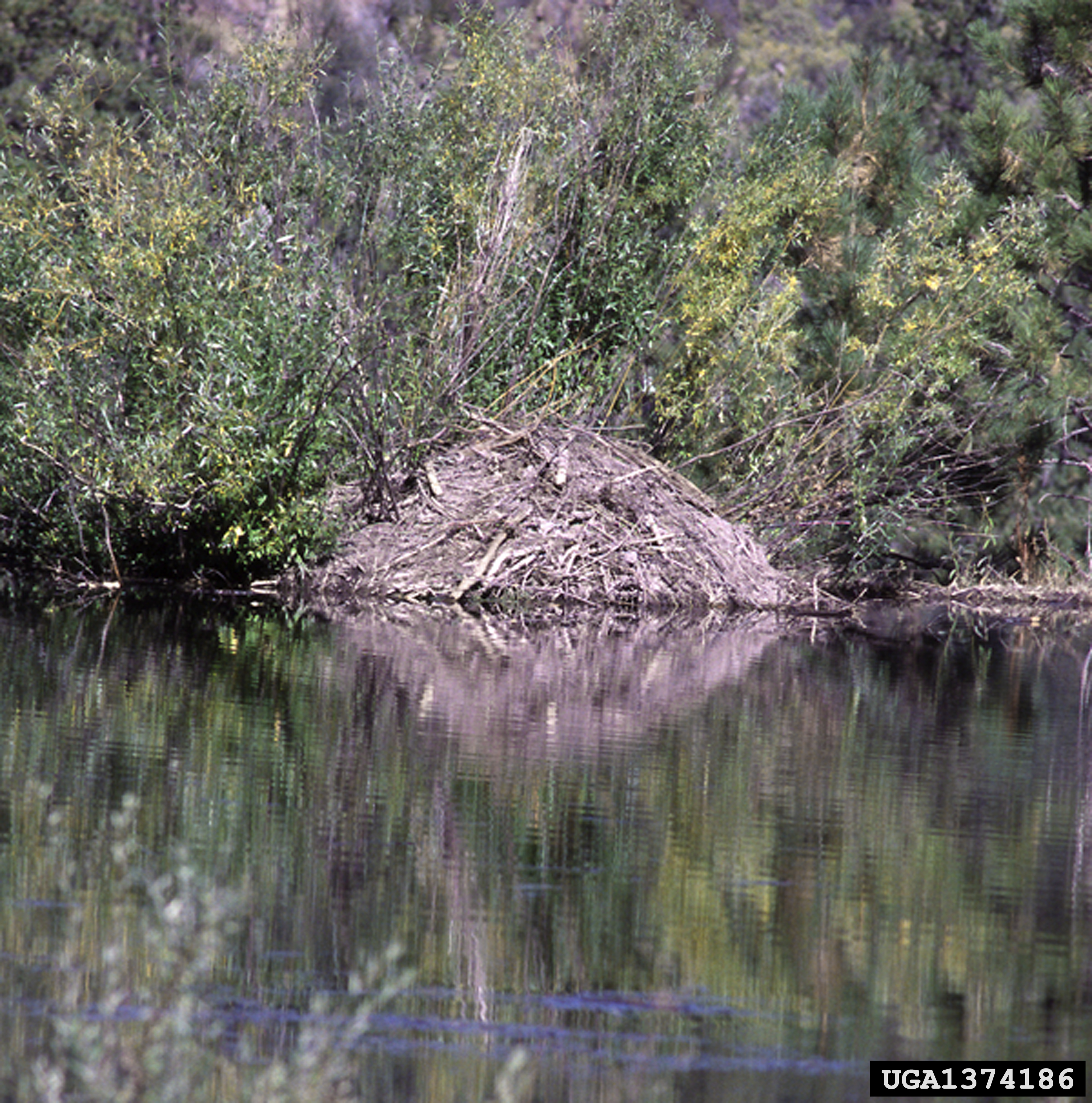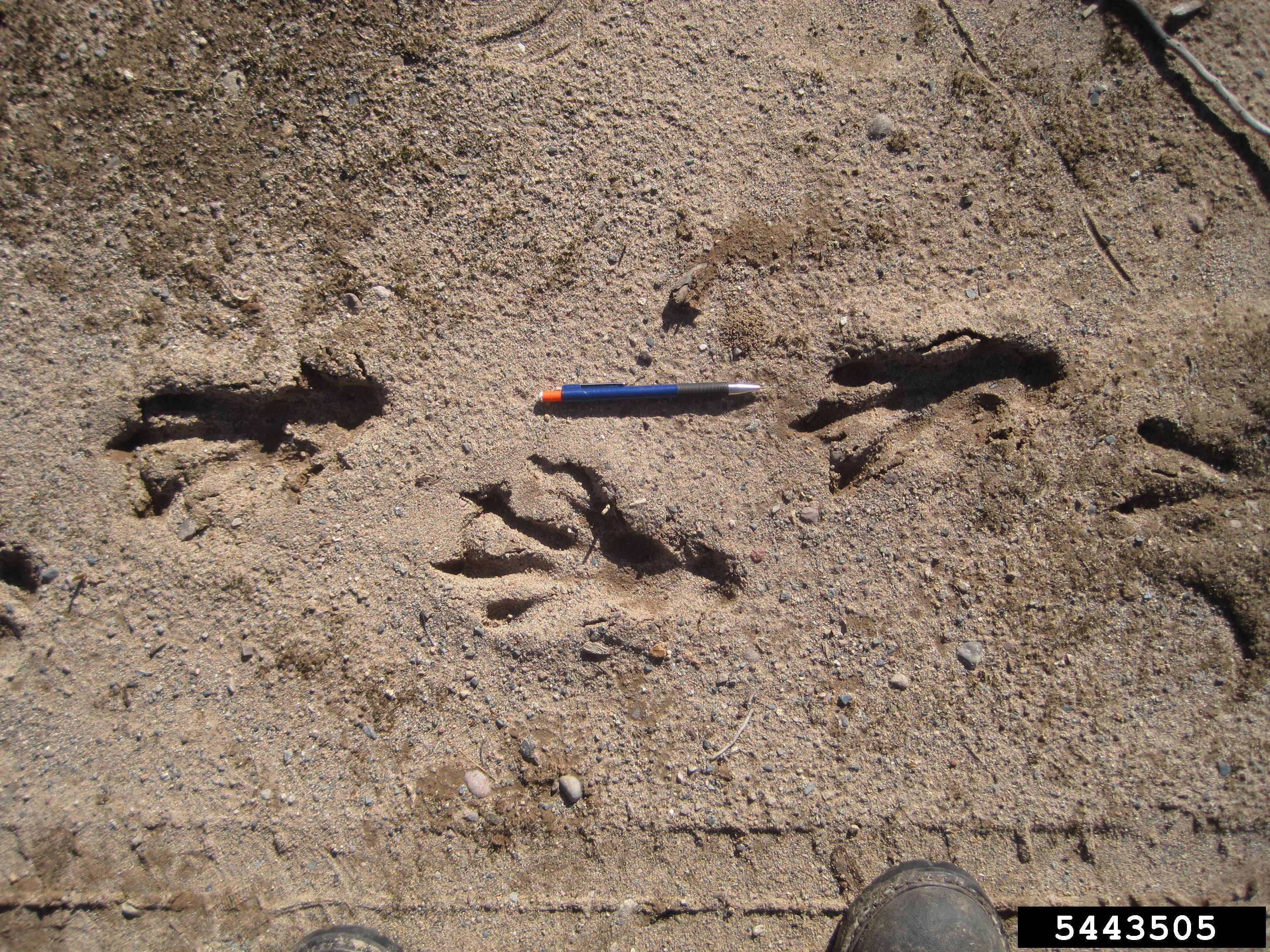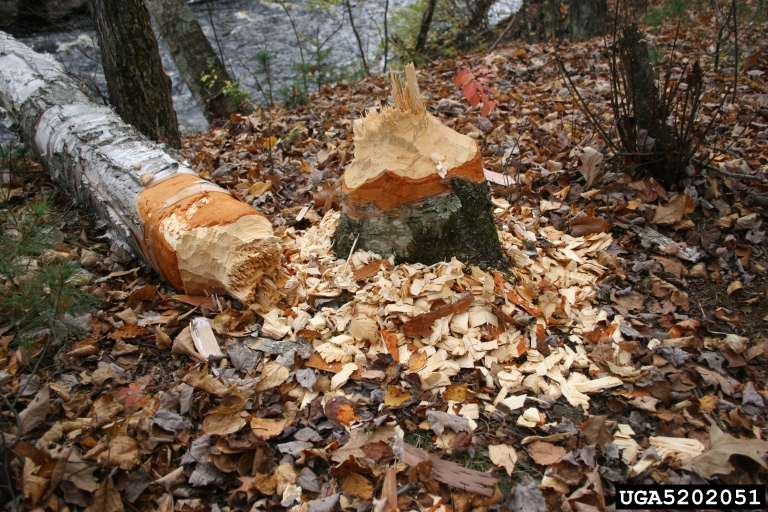 Beaver Tales - June 20, 2018 Jeff Schalau, Agent, Agriculture & Natural Resources University of Arizona Cooperative Extension, Yavapai County Beavers (Castor canadensis) are the largest rodents in Arizona and carry unique equipment for life in the water. Their broad, paddle-like tail and webbed hind feet make them strong swimmers. Their ears have valves that allow them to exclude water when diving. All beavers have long, dense fur, but the Arizona populations have the lightest color of any in North America. Their heavy incisors give them a means to convert small to medium trees into construction materials for dams and sometimes lodges. They are usually nocturnal, and may be observed at fairly close range as they have poor eyesight. Beavers can have one to eight young per litter. They build two types of dens: stick houses in the stream or pool or bank houses burrowed into the soil along the waterís edge. In the Verde Valley, most beaver dens are the burrow type. The entrance is underwater and leads to an enlarged cavity above the high water line. Beavers feed on leaves, twigs and bark of many woody species including cottonwood, willow, aspen, salt cedar, as well as cattail, and other tuberous aquatic plant roots. Like other rodents, they must chew to wear away the constantly growing incisors. Fur trappers first came to the Verde Valley in the 1820's. Kit Carson was among these early trappers. The beaver furs were used to make felt hats which withstood rough wear and successive wettings better than felt made from wool or other types of fur. In many parts of Arizona, including the Verde Valley, beavers were eventually extirpated (made locally extinct) from the Verde Valley by these trappers. In terms of ecosystem health and water quality, beavers can play an important role in riparian areas (lands that are adjacent to water). Their dams slow the flow of water, settling silt, sediment and organic debris. These structures act like a sponge holding the water higher in the watershed. While they are not as plentiful today as they once were, beavers have been reintroduced to many of Arizonaís streams and water bodies. Because they exert such a strong influence on aquatic and riparian communities, the beaver is considered a keystone species. Such an organism plays a role in its ecosystem that is analogous to the role of a keystone in an arch. While the keystone feels the least pressure of any of the stones in an arch, the arch still collapses without it. Using this analogy, the presence of presence of beavers in an ecosystem can have an effect on many other organisms in an ecosystem. Today, the Arizona Game and Fish Department has successfully reintroduced beavers to the Verde Valley and other riparian areas in across the state. Sometimes beavers can be destructive where young trees are planted. If you suspect beaver damage, then positively identify the cause before attempting control measures. Look for tracks on the stream bank or tooth marks on the stumps. Their presence is usually obvious. To control damage on a few trees, wrap trees with hardware cloth (heavy galvanized screen) to a height of 36 inches. Another strategy to protect orchards, vineyards, and gardens is to build an electric fence about 6-8 inches above the ground. The fence should completely encircle any route between the water and potential target areas. I have seen this used successfully along Oak Creek in Cornville. I once conducted a fruit tree pruning workshop at the Jordan Orchard in Clarkdale. Mr. Jordan had stacked the trimmings near the ditch and was going to chip up the material the next day. That night a beaver came up the Cottonwood Ditch and must have smelled the freshly cut fruit wood. It found the trimmings and this must have stimulated its appetite because overnight, several beautiful fruit trees had been damaged or killed. I donít think Mr. Jordan ever forgave me for inviting the beavers to his orchard and I donít blame him. Additional information and photos are included below. Follow the Backyard Gardener on Twitter Ė use the link on the BYG website. If you have other gardening questions, call the Master Gardener help line in the Camp Verde office at 928-554-8992 or e-mail us at verdevalleymg@gmail.com and be sure to include your name, address and phone number. Find past Backyard Gardener columns or provide feedback at the Backyard Gardener web site: http://cals.arizona.edu/yavapai/anr/hort/byg/. Photos  North American beaver (Castor canadensis, By Steve from washington, dc, usa - American Beaver, CC BY-SA 2.0, https://commons.wikimedia.org/w/index.php?curid=3963858).
North American beaver (Castor canadensis, By Steve from washington, dc, usa - American Beaver, CC BY-SA 2.0, https://commons.wikimedia.org/w/index.php?curid=3963858). North American beaver lodge (Rob Routledge, Sault College, Bugwood.org).
North American beaver lodge (Rob Routledge, Sault College, Bugwood.org). North American beaver tracks (Rob Routledge, Sault College, Bugwood.org).
North American beaver tracks (Rob Routledge, Sault College, Bugwood.org). Paper birch cut down by beaver chewing. Photo taken in Banning State Park, MN (Steven Katovich, USDA Forest Service, Bugwood.org).
Paper birch cut down by beaver chewing. Photo taken in Banning State Park, MN (Steven Katovich, USDA Forest Service, Bugwood.org).Additional Resources Living with Wildlife in Illinois: Beaver (Castor canadensis) University of Illinois Extension Note: Some control methods recommended in this publication may not be legal in Arizona. Consult the Arizona Game and Fish Department for more information. web.extension.illinois.edu/wildlife/directory_show.cfm?species=beaver Managing Wildlife Damage: Beavers (Castor canadensis) Virginia Cooperative Extension Note: Some control methods recommended in this publication may not be legal in Arizona. Consult the Arizona Game and Fish Department for more information. pubs.ext.vt.edu/420/420-202/420-202.html |